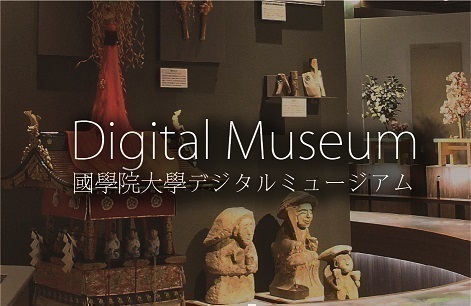- トップ
- Encyclopedia of Shinto
- Uden Shintō
Encyclopedia of Shinto
| Main Menu: | |
| Links: |
詳細表示 (Complete Article)
| カテゴリー1: | 8. Schools, Groups, and Personalities |
|---|---|
| カテゴリー2: | Medieval and Early Modern Schools |
| Title | Uden Shintō |
| Text | Shinto doctrines enunciated by Kamo no Norikiyo (a.k.a. Umetsuji no Norikiyo, 1798-1862). Norikiyo hailed from a family of Shinto priests at the shrine of Kamo wake Ikazuchi Jinja, and constructed his teachings on the basis of the Shinto transmissions that had emerged there. In the sense that these had been transmitted from the ancestor of the Kamo clan, Yata Karasu 八咫烏, his teachings are referred to as Uden Shintō烏伝神道, "Shinto in the Karasu transmission," a name that employs a different reading of the same Chinese character, karasu/u烏. Norokiyo's doctrines preach that all phenomena common to nature and human relationships arise through the union of the function of Heaven, ka陽, and the function of Earth, mi 陰. Norikiyo regarded this union as producing ka-mi no michi, a phrase that through a Japanese play on words means both "the Way of Heaven and Earth" and "the Way of the Gods"—which is to say, Shinto. In over sixty works, he gave instructions for a Shinto mode of being in all situations, from astronomy to daily life, using concrete examples and metaphors in diverse ways. He attached particular importance to the chapter on the Age of the Gods from the Nihon shoki, which he regarded as a concise summation of the Way of Heaven, Earth, and Man, and placed the interpretation of this chapter at the center of his doctrines. In addition, he proposed measures for social reform as a means of ensuring stability to the populace. In his work, How to Be Mindful of Fire (Hi no yōjin shikata), he attempted not only to prevent fires through the use of fire-resistant architecture that employed crosspieces and plaster, but also to extinguish the "fires in the human heart" through the foundation of schools and libraries (known as "shrines for boys," hiko no yashiro, and "shrines for girls," hime no yashiro) in each district of town, as well as through the establishment of mutual-aid societies that would relieve the poor. In addition, in works presented to the bakufu, such as Thoughts of the Ant(Ari no omoi) and The Boat-song of the Great Peace (Taihei no funauta), he advocated plans to employ the urban vagrant population to work developing uncultivated land and draining swamps, giving them a settled life, as well as improving security and national strength. Thus, while Norikiyo's teachings were fanciful, they represented an attempt to address the variety of problems that had emerged in the society of the day; earning him popularity among the masses, but also leading the bakufu to place him under suspicion Aside from this doctrinal aspect, he also conducted sessions of "quiet sitting" (seiza), principally with the goal of curing various illnesses, and he prescribed a medicine known as "Resolvent for Dispelling the Enemies of the Gods" (Shinteki taiji san). Norikiyo seems to have attracted disciples from the Tenpō era (1830-1844). In 1846, he established the retreat Zuiuen on the shore in Edo's Ike no Hata area, together with two other sites at which he could teach; he continued to educate the masses through his lectures on Shinto and numerous published works. In 1847, the bakufu's Magistrate for Shrines and Temples charged him with "criticizing the Way of Government" and exiled him to Hachijōjima, a volcanic island some three hundred kilometers south of Edo. After this, his eldest son Nobukiyo took center stage and continued activities on the basis of the instructional books sent from his father in exile, but Nobukiyo died in 1855. The activities of his disciples from that point are unclear, but it would seem that until the early years of the Meiji period, certain groups continued to uphold his teaching, such as the Shinshū Kyōsōyō Kyōkai and the Shikan Kyōkai. See also Kamo no Norikiyo. -Ogihara Minoru |




